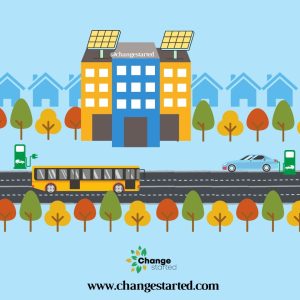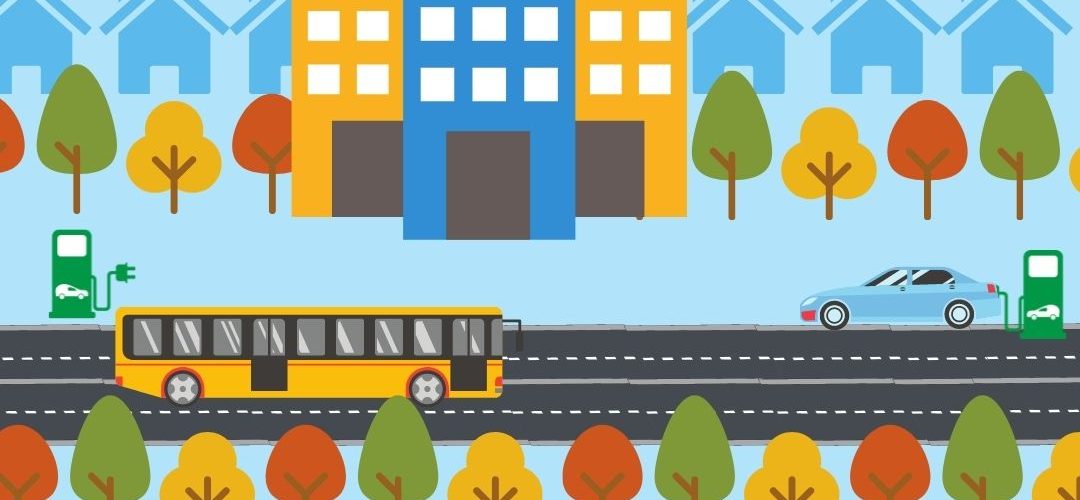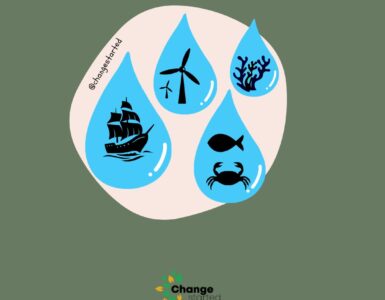Cities around the world should become more sustainable and reduce their carbon footprint.
Sustainable cities are essential for developing safe, healthy, and emissions-free societies. The development of sustainable cities can be achieved through various means, such as:
Social Interactions
Humans are social creatures and thrive in urban spaces that foster social connections. Because of this, a shift to denser, urban living would provide an outlet for social interaction and conditions under which humans can prosper. Over 50% of the world’s population is estimated to live in cities and urban areas.
Contrary to common belief, urban systems can be more environmentally sustainable than rural or suburban living. With people and resources close to one another, saving energy and resources, such as food transportation and mass transit systems, is possible. Finally, cities benefit the economy by locating human capital in one relatively small geographic area where ideas can be generated.
Urban infill
Many cities are shifting from the suburban sprawl development model to a return to dense urban living. This shift in the geographic distribution of the population leads to a denser core of city residents. People living in higher densities not only give economies of scale but also allow for infrastructure to be more efficient.
Walkable urbanism
Walkable urbanism should be adopted while housing a diverse population, walkable streets, positive public space, integrated civic and commercial centers, transit orientation, and accessible open space. It also advocates for the density and accessibility of commercial and government activity.
Urban Farming
Urban farming is growing and distributing food and raising animals in and around a city or urban area. It differs from rural agriculture because it is integrated into the urban economic and ecological system.
Urban agriculture is embedded in the urban ecosystem. Such linkages include the use of urban residents as laborers, the use of typical urban resources (like an organic waste as compost and urban wastewater for irrigation), direct links with urban consumers, direct impacts on urban ecology (positive and negative), being part of the urban food system, competing for land with other urban functions, being influenced by urban policies and plans, etc.
In urban agriculture, in the context of creating a sustainable city, the method of food cultivation saves energy in food transportation and saves costs. For urban farming, cities must allot a common area for community gardens or farms and a common place for a farmer’s market where the foodstuffs grown in the town can be sold to the residents of the urban system.
Agriculture
Small-scale/private farming plots or larger-scale agricultural systems should also be located within the city or suburbs. This will reduce the distance food has to travel from field to fork.
Renewable energy
Maximum use of renewable sources, such as wind turbines, solar panels, or biogas created from sewage, should be ensured. Zero-energy buildings and other energy conservation systems/devices should also be used.
Reduction in energy consumption
Various methods to reduce the need for air conditioning (a massive energy demand), such as planting trees and lightening surface colors, natural ventilation systems, an increase in water features, and green spaces equaling at least 20 percent of the city’s surface. These measures counter the “heat island effect” caused by an abundance of tarmac and asphalt, making urban areas several degrees warmer than surrounding rural areas – as much as 60 degrees centigrades during the evening.
Emphasis on proximity
Created by eco-friendly urban planning, urban proximity is an essential element of current and future sustainable transportation systems. This requires that cities be built and added onto with appropriate population and landmark density so that destinations we reached with reduced time in transit.
This reduced time in transit allows for reduced fuel expenditure and opens the door to alternative means of transportation, such as bike riding and walking.
Furthermore, the proximity of residents and major landmarks allows for the creation of efficient public transportation by eliminating long, sprawled-out routes and reducing commute time. This, in turn, decreases the social cost to residents who choose to live in these cities by allowing them more time with families and friends instead of eliminating a part of their commute time.
New urbanism
The Charter of New Urbanism is the most clearly defined form of walkable urbanism. It is an approach for successfully reducing environmental impacts by altering the built environment to create and preserve smart cities which support sustainable transport.
Residents in compact urban neighborhoods drive fewer miles and have significantly lower environmental impacts across various measures than those living in sprawling suburbs. The concept of circular flow land use management can also be introduced to promote sustainable land use patterns that strive for compact cities and a reduction of greenfield land taken by urban sprawl.
Car-free cities
The concept of car-free cities or a city with large pedestrian areas should be a part of the design of a sustainable city. A large amount of a city’s carbon footprint is generated from cars, so it is often considered an integral part of the design of a sustainable city.

Public transport
Improved public transport and an increase in pedestrianization will reduce car emissions. This requires a radically different approach to city planning, with integrated business, industrial, and residential zones.
Roads may be designed to make driving difficult. Optimal building density should be adopted to make public transport viable but avoid the creation of urban heat islands. Solutions to decrease urban sprawl involve seeking new ways of allowing people closer to the workspace. Since the workplace tends to be in the city, downtown, or urban center, they seek to increase density by changing many suburbanites’ antiquated attitudes towards inner-city areas.
Transportation
With a significant focus on sustainable cities and society development, sustainable transportation attempts to reduce a city’s reliance on and use of greenhouse gases by utilizing eco-friendly urban planning, low- environmental impact vehicles, and residential proximity to create an urban center with greater environmental responsibility and social equity.
Transportation systems account for nearly a quarter of the world’s energy consumption and carbon dioxide emission. To reduce the environmental impact caused by transportation in metropolitan areas, sustainable transportation utilizes to create more healthy and productive urban centers. Sustainable transport emphasizes using diverse fuel-efficient vehicles to reduce greenhouse emissions. Using alternative energy cars should be encouraged. Also, creating centralized bikes and walking paths remains a staple of the sustainable transportation movement.
Transportation access
Since car and fuel costs are often too expensive for lower-income urban residents, mitigating this aspect revolves around efficient and accessible public transportation. To make public transit more accessible, rides must be affordable, and stations must be located within walking distance in each part of the city.
Studies have shown that this accessibility significantly increases social and productive opportunities for city residents.
By allowing lower-income residents cheap and available transportation, individuals can seek employment opportunities all over the urban center rather than simply in the area in which they live. This reduces unemployment and several associated social problems such as crime, drug use, and violence.
Contributed by PB Rastogi, Former Advisor to the Ministry of Forests and Climate Change, India.
Green Buildings:
Green buildings can be essential to infrastructure development and create sustainable cities.






Add comment